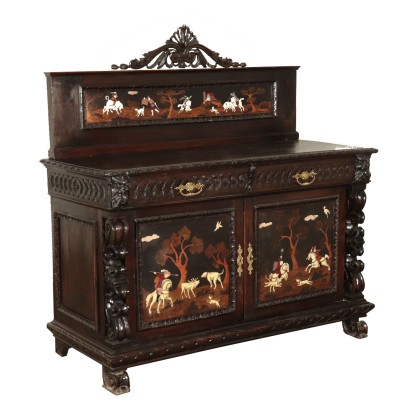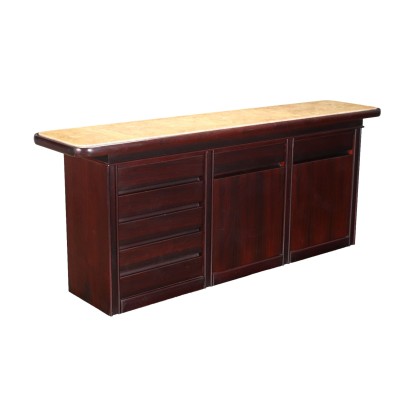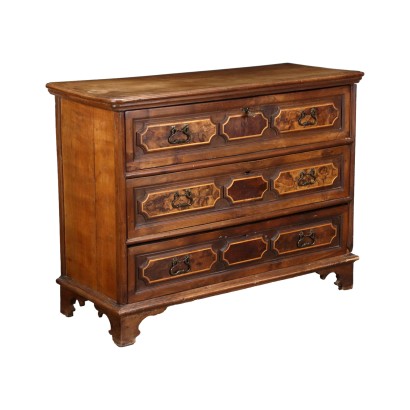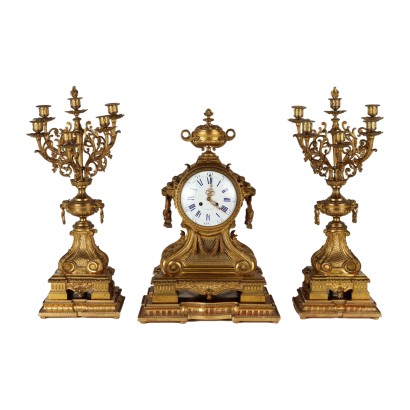Walnut Inlaid Cupboard Italy 19th-20th Century
Features
Age: 19th Century / 1801 - 1900 , 20th Century / 1901 - 2000
Origin: Italy
Main essence: Various Wood Essences , Walnut , Poplar
Material: Bone
Description
Cupboard with two doors and two drawers. It has engraved uprights and drawers. Upper part with cymatium. Inlaid reserves in bone and various wood essences with hunting scenes.
Product Condition:
Fair condition. Wear consistent with age and use.
Dimensions (cm):
Height: 158
Width: 155
Depth: 65
Additional Information
Age:
19th Century / 1801 - 1900
19th Century / 1801 - 190020th Century / 1901 - 2000
20th Century / 1901 - 2000Main essence:
Various Wood Essences
Walnut
Walnut wood comes from the plant whose botanical name is juglans regia , probably originally from the East but very common in Europe. Light or dark brown in color, it is a hard wood with a beautiful grain, widely used in antique furniture. It was the main essence in Italy throughout the Renaissance and later had a good diffusion in Europe, especially in England, until the advent of mahogany. It was used for solid wood furniture and sometimes carvings and inlays, its only big limitation is that it suffers a lot from woodworm. In France it was widely used more than anything else in the provinces. In the second half of the eighteenth century its use decreased significantly because mahogany and other exotic woods were preferred.Poplar
Essence considered "poor", it is a white wood, with yellowish or greyish shades, light and tender, which is easily damaged. It is used for rustic furniture or in the construction of furniture. The most valuable use it has had in the history of furniture is in Germany, in the 19th century, for veneers and inlays in the Biedermeier period.Material: Bone
Alternative proposals
It could also interest you




































